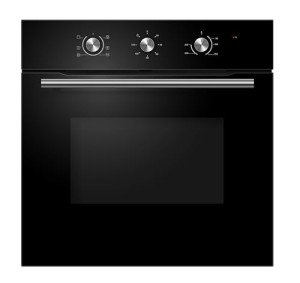Understanding Electric Integrated Ovens: A Comprehensive Guide
As technology continues to advance, the kitchen home appliance market has actually seen an amazing transformation, particularly with the intro of electric integrated ovens. These appliances provide a smooth mix of contemporary style and performance, becoming important tools for both amateur and professional chefs alike. This article will dive into the numerous aspects of electric integrated ovens, highlighting their features, advantages, and factors to consider when acquiring.
What is an Electric Integrated Oven?
An electric integrated oven is a built-in cooking home appliance that is developed to fit perfectly into kitchen cabinets. Unlike freestanding ovens, integrated ovens are typically flush with the surrounding cabinets, offering a streamlined visual. They are normally powered by electrical power, which uses consistent cooking temperatures and precise control.
Key Features of Electric Integrated Ovens
Electric integrated ovens come with a wide variety of functions that accommodate differing cooking requirements. Here are some of the crucial features:
- Design Flexibility: The built-in design enables custom setups according to kitchen layouts.
- Multiple Cooking Modes: Most electric integrated ovens offer varied cooking modes, including baking, broiling, roasting, and convection.
- Self-Cleaning Options: Many designs consist of self-cleaning features that make use of heats to burn food residues.
- Smart Technology: Advanced models come with smart functions allowing users to control the oven remotely by means of smartphone apps.
- Energy Efficiency: Electric ovens are often designed to consume less energy compared to their gas equivalents.
Benefits of Electric Integrated Ovens
Electric integrated ovens provide many advantages for home cooks. Below are some of the most substantial advantages:
- Space-Saving Design: The integration into cabinets takes full advantage of kitchen area, making it ideal for smaller kitchens.
- Aesthetic Appeal: The sleek appearance improves the general appearance of a kitchen, offering it a contemporary and sleek surface.
- Consistent Cooking Performance: Electric ovens distribute heat evenly, causing much better cooking results.
- Safety Features: Many integrated models include safety functions such as automobile shut-off and cool-touch doors, reducing the risk of mishaps.
- Versatile Cooking Options: The ability to change in between different cooking modes supplies versatility for numerous cooking styles.
| Feature | Description |
|---|---|
| Design Flexibility | Built to suit existing cabinetry |
| Numerous Cooking Modes | Bake, broil, roast, and convection choices |
| Self-Cleaning Options | High-temperature cleaning for maintenance |
| Smart Technology | Push-button control for enhanced ease of use |
| Energy Efficiency | Lower energy consumption compared to gas ovens |
Considerations When Purchasing an Electric Integrated Oven
Picking the ideal electric integrated oven needs mindful factor to consider of different aspects. Here's a list of indicate keep in mind:
- Size and Capacity: Assess the space readily available in your kitchen and the size of the oven that fits easily while still providing appropriate cooking capability.
- Cooking Features: Identify the cooking includes that are important for your needs, such as convection cooking or steam cooking.
- Price Range: Determine your budget and evaluate the choices available within that range, keeping in mind that higher-end models often include innovative functions.
- Setup: Consider the installation process and whether expert assistance is required to make sure a seamless fit.
- Energy Rating: Look for ovens with great energy scores to minimize long-lasting electricity costs.
Common Types of Electric Integrated Ovens
Several kinds of electric integrated ovens deal with varied cooking environments and user preferences. Here are some common choices:
- Single Ovens: This is the most common type, suitable for normal home cooking requirements.
- Double Ovens: These ovens supply 2 different compartments, enabling for multitasking.
- Compact Ovens: Smaller in size, these models are perfect for cooking areas with limited space.
- Steam Ovens: Incorporating steam cooking, these ovens are excellent for healthier meal preparation.
- Wall Ovens: Installed within the wall, these ovens conserve area and provide a higher cooking range.
Frequently Asked Questions (FAQs)
Q1: How do I tidy my electric integrated oven?
A: Most modern electric integrated ovens come with self-cleaning functions. Nevertheless, for manual cleaning, it's recommended to use non-abrasive cleaners and a soft cloth. Constantly refer to the producer's standards for particular cleaning instructions.
Q2: Can I set up an electric integrated oven myself?
A: While some homeowners might attempt a DIY installation, it is advised to employ an expert for a seamless fit, making sure that the electrical connections are safe and compliant with regional codes.
Q3: Are electric integrated ovens energy-efficient?
A: Yes, electric integrated ovens are typically more energy-efficient than gas ovens. built in electric oven and gas hob packages for designs with high energy rankings for ideal efficiency.
Q4: What cooking modes should I try to find?
A: Look for ovens offering versatile cooking modes like convection baking, broiling, and steam cooking, which can boost your cooking experience.
Q5: Do electric integrated ovens require routine upkeep?
A: Yes, routine upkeep, consisting of cleansing and making sure that seals are intact, will extend the oven's life-span and improve cooking performance.
Electric integrated ovens are a remarkable addition to any contemporary kitchen, combining visual appeal with versatile cooking performances. They not just save space but likewise provide sophisticated functions that can elevate cooking experiences. By understanding their qualities and benefits, customers can make educated choices when selecting an electric integrated oven that best meets their cooking needs. Eventually, these ovens stand as a testimony to the advancement of kitchen technology, dealing with the demands of today's striving chefs.

